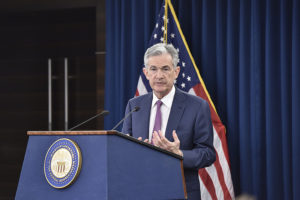The rate the Fed pays on reserves has eclipsed the fed-funds rate as its key monetary tool, with a much more direct influence over the money supply. If the interest rate on reserves is set near the market rate, other things being the same, the money supply will remain unchanged. If market interest rates rise above the rate the Fed pays on bank reserves, banks will expand loans, and the money supply will increase. If the Fed sets the rate it pays on reserves above the market alternative for banks, they will expand their excess reserve holding and the money supply will shrink.
Before the Fed started paying interest on reserves, and before banks held more reserves than they have demand deposits outstanding, the money supply changed when the Fed acted. Now when market rates change, the money supply also changes unless the Fed acts.
As the Fed acquired assets in its three monetary easings, the interest it paid on the reserves induced banks to hold the resulting excess reserves pumped into the banking system. Reserves then earned an average of 0.095 percentage point more than the yield on one-year Treasurys. After quadrupling its balance sheet over eight years the Fed started to sell down the assets on its balance sheet in October 2017. The Fed sold off Treasurys and mortgage-backed securities, and set the rate it paid on reserves so that one-year Treasurys paid 0.43 percentage point more than reserves and 10-year Treasurys paid 1.08 points more.
As a result, banks reduced their reserve holdings enough to offset the effects of Fed asset sales on bank reserves and the money supply. In what was a clear policy success, in the first year of its asset-reduction program the Fed managed to sell $300 billion of assets and induced banks to reduce excess reserves by $467 billion. This expanded the money supply modestly without disrupting prices or spiking interest rates.
The yield on 10-year Treasurys has fallen to 2.12% this month from 3.24% in November 2018—perhaps due to the rush of foreign earnings repatriated after the 2017 federal tax cuts, the inflow of foreign capital attracted by the surge in U.S. growth, or the fall in domestic investment triggered by massive trade uncertainty. In the past month banks have increased excess reserves by more than $64 billion at the same time the Fed reduced overall bank reserves by selling $33 billion of assets.
To prevent an outright contraction of the money supply and the economic disruption it could cause, the FOMC will be forced at its Tuesday meeting either to reduce dramatically the interest the Fed pays on reserves or end its debt wind-down and begin buying securities in the open market. The Fed will likely also cut the upper limit of the fed-funds rate to signal its goal of further monetary easing.
Never in the Fed’s 105-year history has it had less control over market interest rates than it has today. As long as the Fed maintains its bloated balance sheet and the banking system holds massive excess reserves, the Fed will be required to respond to changes in market rates by either adjusting the rate it pays on reserves or using other policy tools to offset the impact market-rate changes have on bank reserve holdings and the money supply. To expect the Fed to hold interest rates above or below the market rate under these circumstances is not only naive but dangerous.
Read more here.




